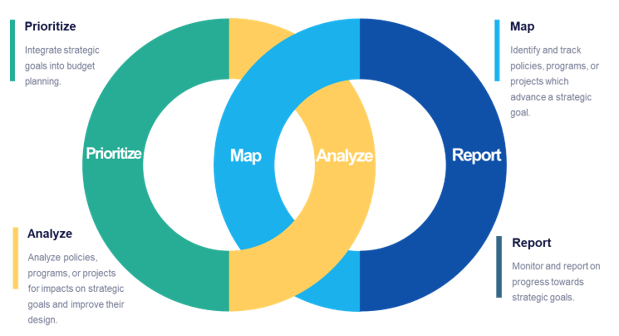Faced with intensifying fiscal pressures, from rising health and pension costs to increased defense spending and the need to address gender inequality, climate change, and economic development, Southeast European countries are at a pivotal moment. With limited public resources, the challenge is clear: how to ensure that budgets remain aligned with evolving national priorities. Strengthening core budget institutions is key to meeting this challenge.
In response, the IMF Fiscal Affairs Department delivered a four-day regional workshop on Budgeting for Priorities from May 20 to 23, 2025, in Ljubljana, Slovenia.[1] The event brought together senior public officials from the Ministries of Finance and Budget Departments of Albania, Bosnia and Herzegovina, Kosovo, and Montenegro.
The workshop focused on strengthening core public financial management institutions across the budget cycle, providing a foundation for more strategic and priority-driven budgeting. It was structured around four guiding principles—Prioritize, Map, Analyze, and Report—which offered participants a systematic approach to identify, assess, and reinforce the institutions, processes, and tools most critical to aligning public resources with evolving national priorities.
Four Principles of Strategic Budgeting

Prioritize means that governments must define strategic goals that are made public and, ideally, approved by Parliament. These goals should be clearly articulated, whether in national or sectoral plans, so that both the Ministry of Finance and line ministries can align them with the budget cycle. While the budget remains a key instrument for achieving national goals, aligning it with long-term priorities and a country’s fiscal policy is a complex process. It requires moving beyond the annual cycle to consider fiscal and policy impacts over multiple years. A credible national medium-term fiscal and budgetary framework are therefore essential for governments to plan strategically, determine available fiscal space, and identify potential efficiency gains.[2]
Map relates to the identification of policies, programs, or activities that are in place or are being proposed in the budget and which advance the goals set out in Principle One. Effective mapping enables budget decision-makers to assess how well their resource allocations align with these goals. It also provides the foundation for tracking implementation. As social and economic priorities shift, institutions for strategic budgeting, such as budget classification, tagging, and investment planning, help governments reallocate resources from lower- to higher-priority areas, ensuring flexibility and responsiveness in budget planning.
Analyze involves understanding budget measures, both expenditure and tax, for their expected or actual impacts and making necessary adjustments whenever possible. Impact assessments - on priorities like economic growth, gender equality, or climate change, especially during budget preparation - help align budget decision making with government objectives and minimize unintended effects, ensuring resources are used efficiently. Similarly, as priorities evolve, tools such as spending reviews and performance evaluations are critical to ensuring resources are used effectively and in line with government objectives.[3]
Report requires that government actions advancing strategic goals through the budget are communicated transparently and meaningfully to the public, Parliament, and other stakeholders. This principle plays a vital role in maintaining reform momentum, promoting accountability, and enhancing the credibility of fiscal policy. Reporting should make use of existing data, and be clear, concise, and easily accessible to enable effective monitoring and evaluation of progress toward national priorities
As countries in Southeast Europe continue to navigate complex fiscal environments, building stronger and more flexible budget institutions will remain a priority. Strategic budgeting provides a practical pathway to ensure that public finances are aligned with the needs and aspirations of citizens. Workshops like this one play a valuable role in fostering knowledge exchange and supporting countries on their reform journey.
[1] The workshop was hosted by the Center of Excellence in Finance (CEF) and supported by the SECO Gender and Climate Funding Program and the Fiscal Reforms in Southeast Europe Phase III program, funded by SECO and the European Union.
[2] See IMF How-to-Note (2024): How to Develop and Implement a Medium-Term Fiscal Framework; and (2022) How to Prepare Expenditure Baselines
[3] See IMF How-to-Note (2022): How to Design and Institutionalize Spending Reviews






